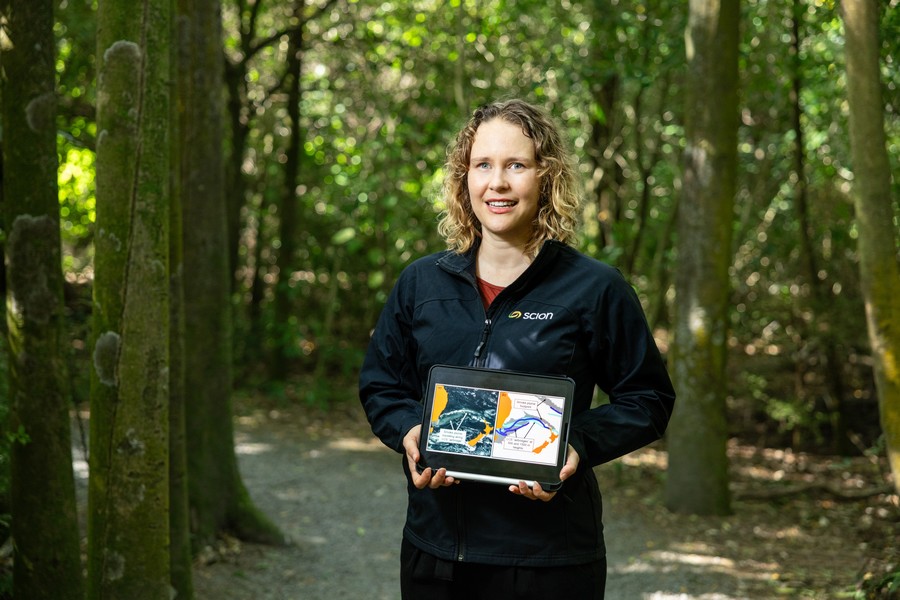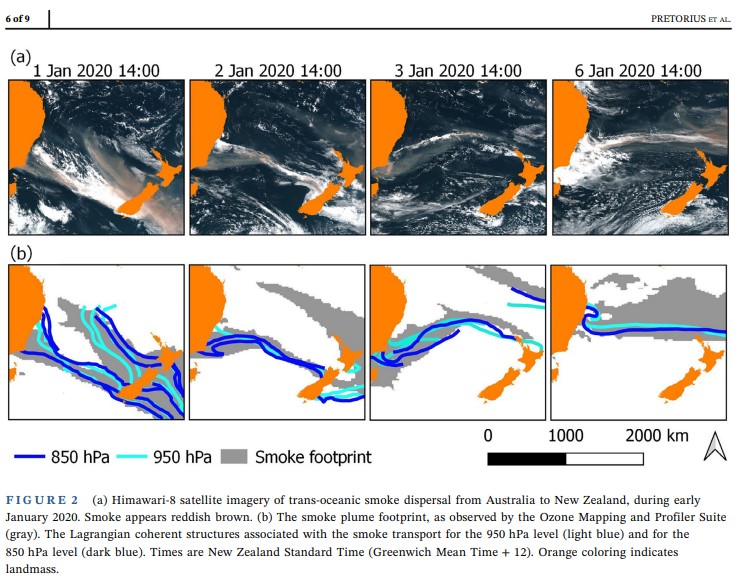Protecting Aotearoa from wind-dispersed pests
Protecting Aotearoa from wind-dispersed pests is a five-year research programme (October 2023 to October 2028) aiming to strengthen our “biosecurity pūkenga (net)” by creating a warning system to help us predict when insects and pathogens may arrive and spread by the wind. The Scion-led and MBIE-supported programme will protect our whenua from unwelcome organisms.
The programme aims to manage the aerial pathway of pest movement by developing a system to monitor formation of airbridges under certain meteorological conditions before pests and pathogens arrive. It will modernise wind trajectory modelling, study airbridges between land masses such as Australia and New Zealand, and fill knowledge gaps on how organisms survive long-distance migration in extreme atmospheric conditions.
News and events
Read about research progress and new discoveries in our latest newsletter, Blown Away.
If you'd like to stay up to date with the programme changes, results, events and more, sign up here.
Background
Over time, New Zealand has battled multiple unwelcome insects and pathogens which arrived by wind and are now established. Here and globally, there are currently no effective tools to manage this aerial pathway. This critical gap in biosecurity defenses allowing wind-dispersed pests (insects/pathogens) to reach New Zealand via the wind and spread here regardless of their arrival mode. The problem could worsen with the changing climate.

Research aims
The programme aims to develop a novel warning system titled Aerobiological Surveillance and Prediction System (ASaP). To do this, the team will address critical knowledge gaps in atmospheric science and biology of wind-dispersed pests. The research will:
- Modernise outdated conventional wind trajectory modelling by incorporating the strengths of new scientific advances in long-distance atmospheric transport.
- Understand which land masses wind-dispersed pests come from, how frequently airbridges form and how the frequency and locations of these airbridges are changing due to climate change.
- Develop new knowledge about how passive insects and microbes move from airbridges to the ground.
- Fill knowledge gaps on organism survival/mortality in extreme atmospheric conditions they experience during long-distance transport.
- Enable continued research in Taranaki through community and tamariki (youth) engagement.
- Partner with Māori kaitiaki to quantify a baseline of arrivals of wind-dispersed pests to monitor future changes.
Research aims include
Long-distance transport
Combine existing atmospheric dispersion modelling and analysis to develop a powerful new tool for atmospheric transport modelling. Develop a long-term (30-year) dataset of airbridges connecting New Zealand and other land masses to determine where organisms travelling by wind are coming from and could come from in the future.
Vertical coupling
Quantify how particles, such as pathogens and insects, move between the upper atmosphere and earth’s surface to help determine the likelihood of survival and of wind-dispersed pests being moved by connecting airbridges between landmasses.
Atmospheric survival data
Document the atmospheric extremes aerial invaders are exposed to during transit. Use flight experiments to assess the survival of flying moths. Record survival of pathogens exposed to the atmospheric extremes of temperature and UV.
Preconditioning, establishment, and surveillance
Undertake two years of surveillance on the west coast of Taranaki to establish a baseline database of insects and pathogens that reached New Zealand via the wind. Live interceptions of organisms will be invaluable to inform the airbridge modelling. The learnings from the entire project will be shared with tamariki in the region through a community outreach and educational project with Taranaki Mounga Project. This will expose tamariki to hands on science education.
ASaP integration, validation, and prediction
Integrate knowledge gained during the programme into the model to provide surveillance of aerial pathways. Automated alerts can be sent to warn stakeholders/communities/kaitiaki at times of high risk meaning the likelihood of new aerial invader establishment could decrease, mitigating risks to national goals for carbon sequestration, the transition to a low-emissions/climate-resilient economy, GDP growth across primary sectors and the protection of the conservation estate and many ecosystem services.

Benefits to NZ
The science team estimates preventing establishment of just one serious pest would recover programme costs 10 to 100 times (NZ$0.125b-1.25b) through avoided losses in forestry and/or horticulture, maintenance of carbon sequestration, and biodiversity conservation.
The warning system will be run in hindcast to inform optimal surveillance locations, in forecast to predict arrivals before they occur, and in hindcast and forecast to predict where organisms could travel within New Zealand after arrival.
Though not all organisms reaching New Zealand via aerial pathways are a risk, New Zealand has battled multiple wind-dispersed pests which have become established (e.g myrtle rust, fall army worm). This research will help protect New Zealand from others circulating in Australia/Asia-Pacific.
Post-graduate Research Opportunities
The programme will be providing scholarships for a number of postgraduate students to the University of Canterbury in the Engineering, Statistics and/or Maths and Environment Schools. If you have an interest in furthering your study in aerobiological modelling, the science of moth flight, or Bayesian network modelling, please keep an eye out for vacancies on the University of Canterbury website.
Collaborators
New Zealand-based collaborators include:
- NIWA
- AgResearch
- University of Canterbury
- Taranaki Mounga Project (research programme partner)
- Plant & Food Research
- Manaaki Whenua Landcare Research
- Taranaki Regional Council
- OMV
International collaborators include:

The research programme is funded by the Ministry of Business, Innovation and Employment with co-funding from Te Uru Kahika – Regional and Unitary Councils Aotearoa and The Foundation for Arable Research.
Contact
Ilze Pretorius, Atmospheric dispersion modeller
